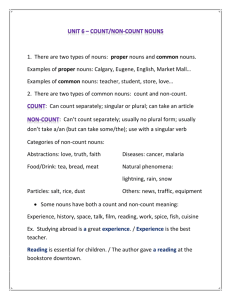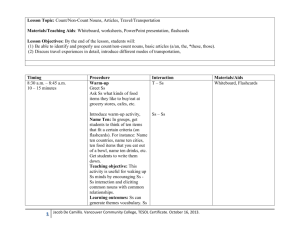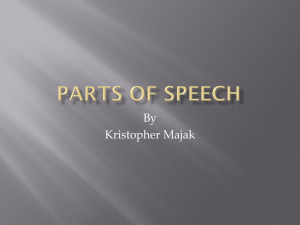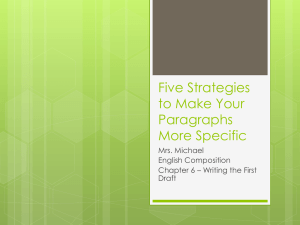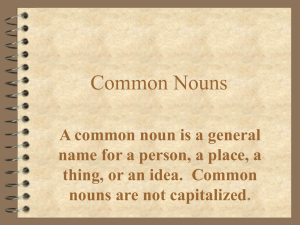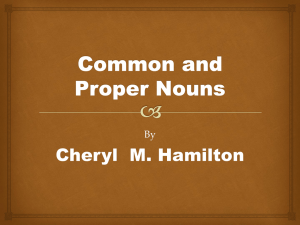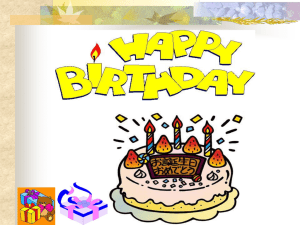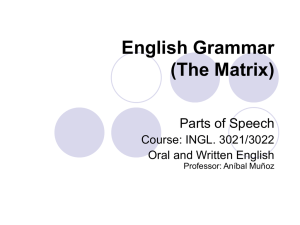Count-Non Count Noun..
advertisement
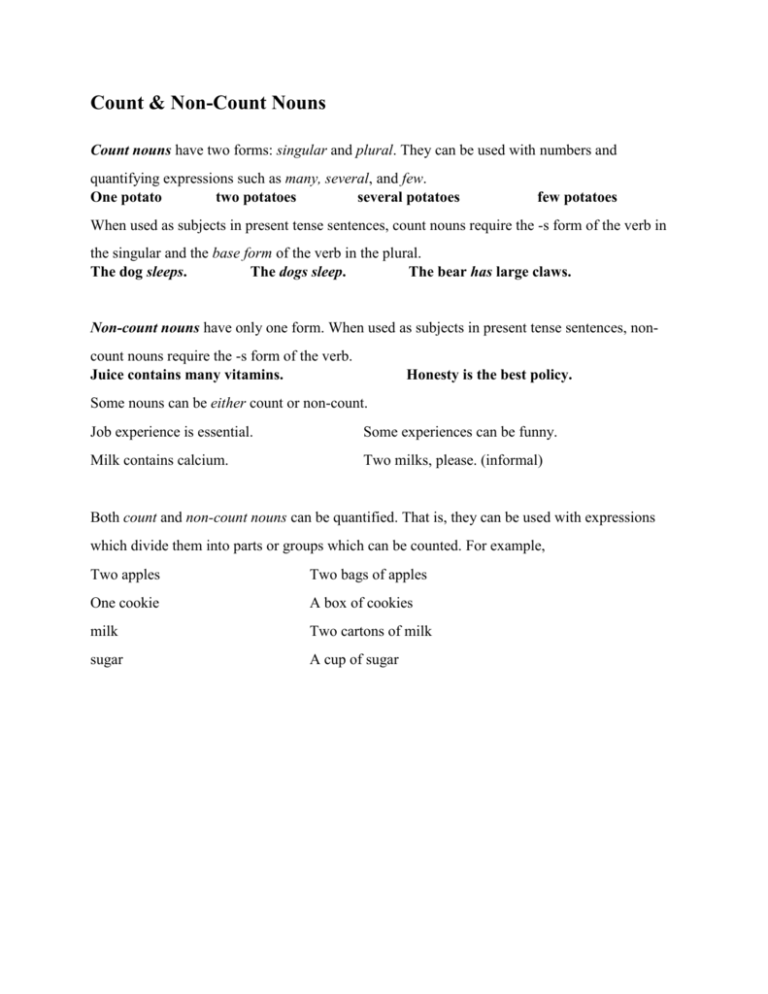
Count & Non-Count Nouns Count nouns have two forms: singular and plural. They can be used with numbers and quantifying expressions such as many, several, and few. One potato two potatoes several potatoes few potatoes When used as subjects in present tense sentences, count nouns require the -s form of the verb in the singular and the base form of the verb in the plural. The dog sleeps. The dogs sleep. The bear has large claws. Non-count nouns have only one form. When used as subjects in present tense sentences, noncount nouns require the -s form of the verb. Juice contains many vitamins. Honesty is the best policy. Some nouns can be either count or non-count. Job experience is essential. Some experiences can be funny. Milk contains calcium. Two milks, please. (informal) Both count and non-count nouns can be quantified. That is, they can be used with expressions which divide them into parts or groups which can be counted. For example, Two apples Two bags of apples One cookie A box of cookies milk Two cartons of milk sugar A cup of sugar Sometimes a non-count noun is used to indicate a "group" of items, whereas individual items within the group are countable. For example, Non-count Count Money dollars, bills, fives, cents, dimes, coins Time years, months, days, hours, minutes Clothing dresses, pants, shirts, socks, shoes Furniture tables, chairs, sofas, lamps Luggage suitcases, briefcases, bags, carry-ons Non-Count Noun Groups Whole groups composed of similar items- mail, luggage, jewelry, furniture, etc. Items composed of small particles- rice, corn, wheat, sand Liquids & Fluids Gases Subjects/Fields of study Abstract concepts- advice, beauty, intelligence, progress, etc. Meats/Solids/Materials/Metals Recreation Natural phenomena- cold, fog, energy, hail, heat, humidity, etc. Diseases & medical conditions http://www.english-zone.com/grammar/noncount2.html http://www.eslgold.com/grammar/count_noncount_nouns.html
